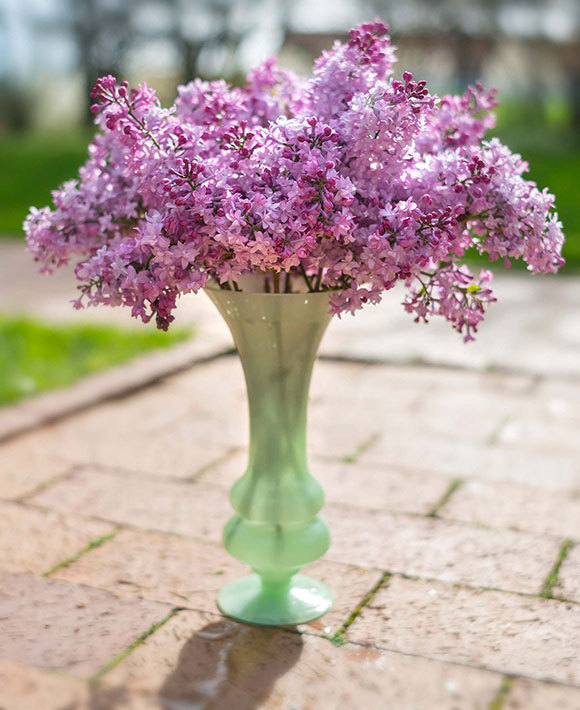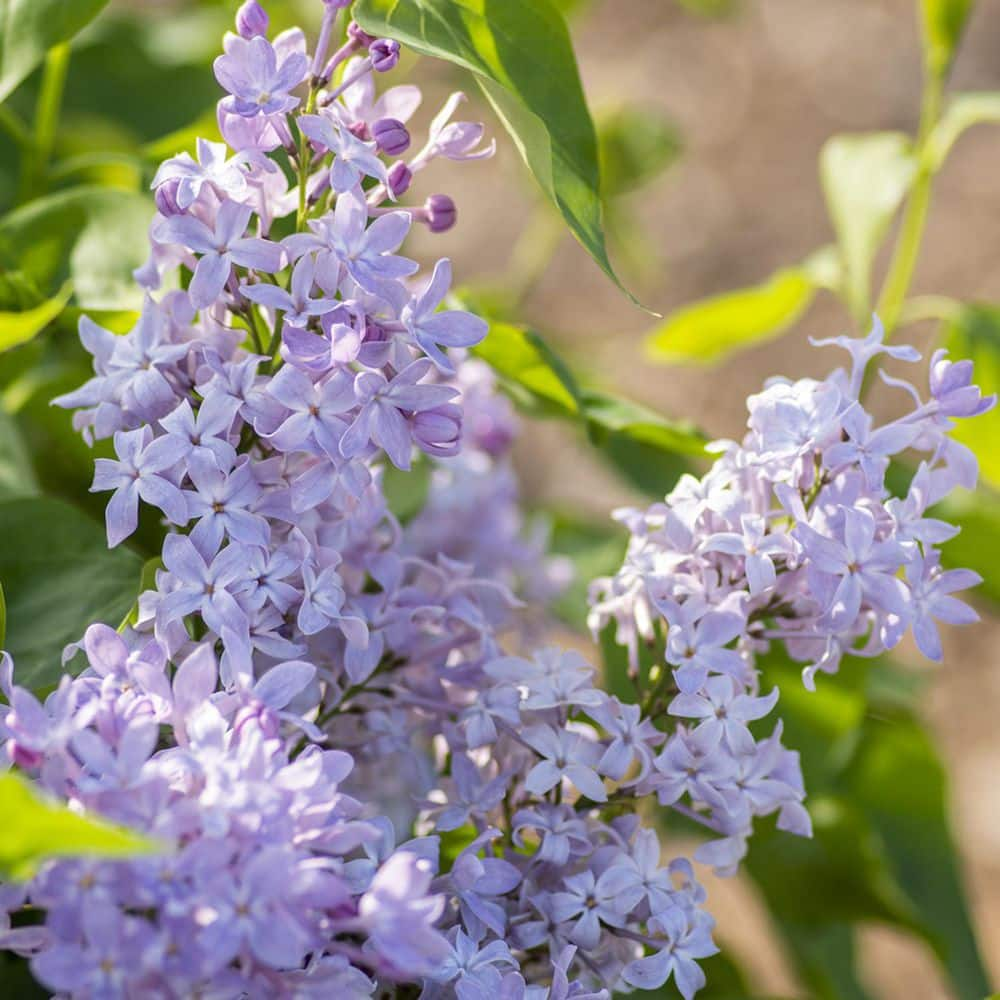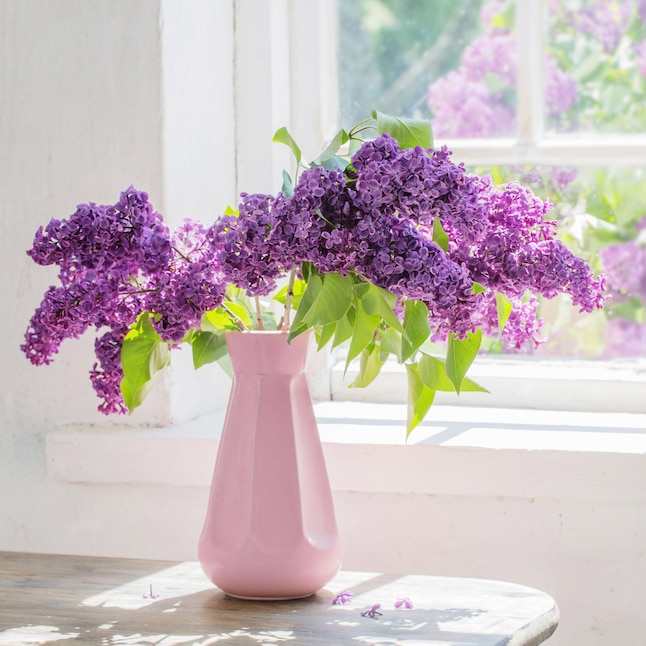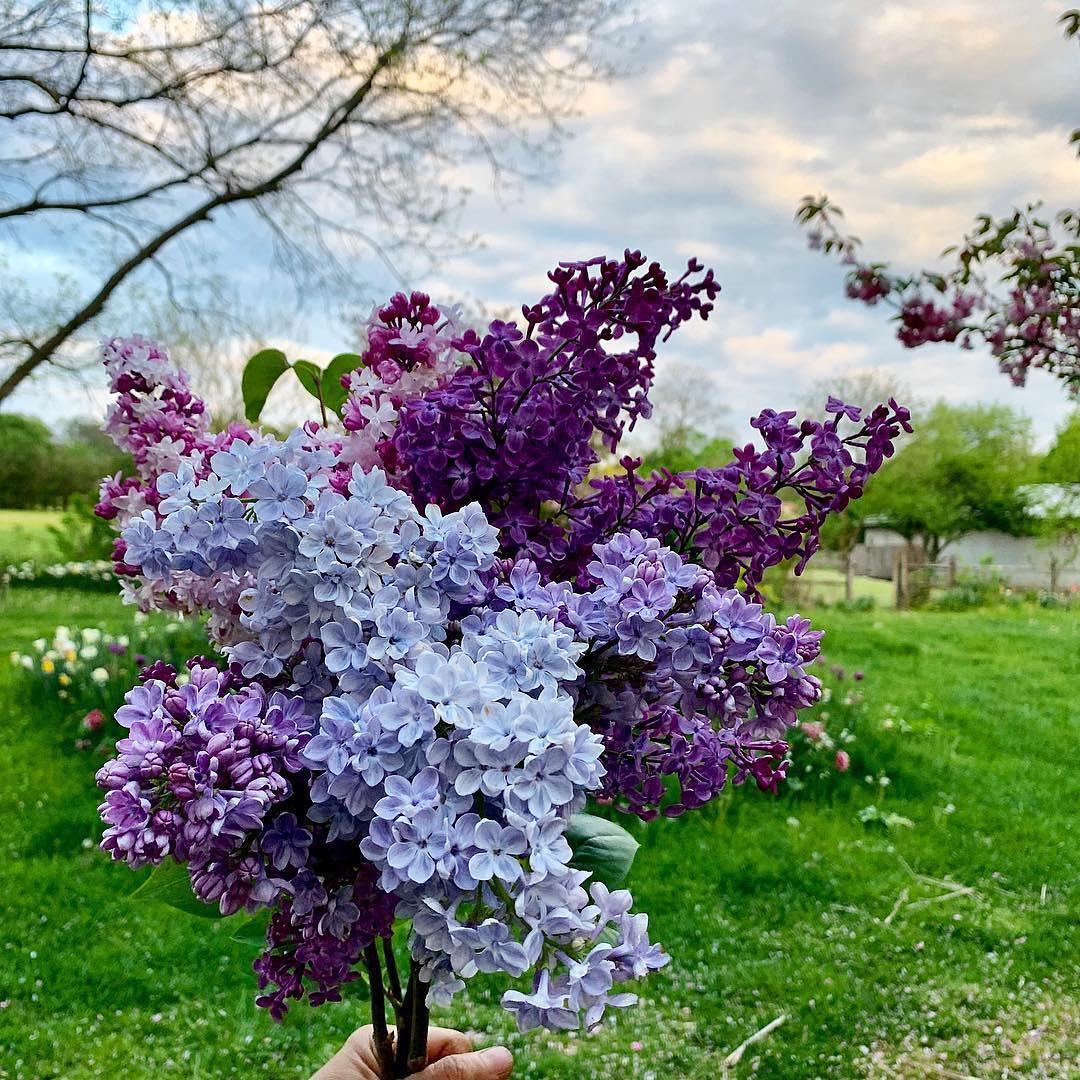The lilac flower has long been a beloved flower known for its light, sweet fragrance and beautiful shades of purple. But beyond their lovely appearance, lilacs also carry a deeper symbolic meaning. Lilac flowers have a rich history and cultural significance that imbues them with several different meanings and associations.

History and Origins of Lilacs
- Lilacs have a long and storied history, spanning cultures and centuries. They originated in Eastern Europe and the Balkans and were first cultivated around the 1500s.
- The word “lilac” comes from the French word “lilas” and the Persian word “nilak”, both referring to the purple-blue tones of the blossoms.
- Lilacs were brought to America by the early British colonists in the 1600s. They quickly became popular garden plants, prized for their beauty and fragrance.
- Different lilac species and cultivars were developed over time, resulting in a wider color palette and extended blooming season. Today there are over 2,000 varieties of lilacs.
- Lilacs are prominent in many spring traditions and celebrations across America and Europe, featured in parades, festivals, weddings, and religious holidays.
Lilac Flower Meaning: Unveiling the Secrets
The rich history and cultural significance of lilacs has imbued the flowers with several symbolic meanings over time. Here are some of the primary symbolic associations with the lilac flower:
Love, Romance, and Passion
Lilac flowers have long been associated with love and romance, making them a popular choice for bouquets and gardens. The delicate and fragrant blooms of the lilac plant come in various shades of light purple, which have become symbolic of different aspects of love.
One of the most common meanings associated with lilacs is that of first love and new romance. The light purple hues of the flower are often seen as representing the initial stages of a relationship, when everything is fresh and exciting. This symbolism is further emphasized by the fact that lilacs typically bloom in the spring, a season often associated with new beginnings and budding love.
In addition to representing new love, lilacs also symbolize the renewal of passion and affection in a long-term relationship. Just as the flowers bloom each year, they can serve as a reminder to couples to continue nurturing their love and keeping the flame alive. This meaning is especially significant for those who have been together for a long time and want to reignite the spark in their relationship.
Lilacs are also seen as a symbol of enduring love that stands the test of time. This meaning is derived from the fact that lilac bushes can live for decades, with some even surviving for over a hundred years. As such, lilacs can represent a love that is strong and resilient, able to withstand any challenges or obstacles that may come its way.
Another aspect of love that lilacs symbolize is irresistible and all-consuming passion. The intoxicating scent of lilacs has been known to evoke feelings of desire and infatuation, making them a fitting representation of intense and overwhelming love. This symbolism is often associated with the darker shades of lilac, such as deep purple or magenta.
The association between lilacs and love dates back to the Victorian era, where it was a custom to present these flowers to one’s romantic partner as a declaration of love. In fact, lilacs were often used in wedding bouquets and decorations, symbolizing the couple’s love and commitment to each other. This tradition continues today, with lilacs still being a popular choice for floral gifts between couples.
Lilacs have a rich and romantic symbolism that has been passed down through generations. From representing new love and passion to enduring and all-consuming love, these delicate flowers hold a special place in the hearts of many. So the next time you come across a lilac bush or receive a bouquet of these beautiful blooms, remember their symbolic meanings and let them remind you of the power and beauty of love.
Innocence and Youthfulness
The lilac flower is a beautiful and delicate bloom that has been cherished for centuries for its soft colors and sweet fragrance. It is a popular choice for gardens, bouquets, and even weddings, but beyond its aesthetic appeal, the lilac flower also holds a deeper meaning and symbolism.
One of the most common meanings associated with the lilac flower is its representation of youth and innocence. The vibrant and lively colors of the lilac, ranging from pale lavender to deep purple, evoke a sense of youthful vitality and playfulness. This is further emphasized by the delicate and dainty appearance of the flower itself. In this way, the lilac flower can be seen as a symbol of the carefree and innocent nature of childhood.
Additionally, the sweet aroma of the lilac flower is often associated with kindness and compassion. Its gentle scent can bring about feelings of warmth and comfort, making it a popular choice for gifts or as a gesture of love and appreciation. The lilac flower is also said to represent sweetness, both in terms of personality and in the fleeting moments of joy and happiness that we experience in life.
Furthermore, the lilac flower is often seen as a symbol of nostalgia for the carefree days of youth. As we grow older and face the challenges and responsibilities of adulthood, the lilac flower serves as a reminder of simpler times and cherished memories. Its presence can bring about a sense of peace and tranquility, allowing us to reflect on the past and appreciate the present.
The lilac flower holds a special place in our hearts not only for its beauty but also for its rich symbolism. It represents the joys and innocence of childhood, the sweetness and kindness of human nature, and the bittersweet nostalgia for the carefree days of youth. So the next time you come across a lilac flower, take a moment to appreciate its deeper meaning and let it bring a sense of joy and peace into your life.
Transition and Rebirth
Lilacs are beautiful and fragrant flowers that bloom in mid- to late spring, filling the air with their sweet scent. They have been cherished by many cultures for centuries, not only for their beauty but also for their symbolic meanings.
One of the most prominent meanings associated with lilac flowers is their tie to the changing seasons. As they bloom during the transition from winter to spring, they symbolize the arrival of spring and the end of the cold, dark winter months. This makes them a powerful symbol of rebirth and renewal. Just as the lilacs bloom after a period of dormancy, they represent the idea of new beginnings and starting fresh. This symbolism is often used in celebrations of the spring equinox and other festivals that mark the changing of the seasons.
In addition to representing the arrival of spring, lilacs also hold meanings related to transition and milestones in life. As they bloom during a time of change, they are seen as a symbol of moving through life’s transitions and embracing new phases. This can include anything from graduating from school, getting married, or even starting a new job. Lilacs remind us that change is a natural part of life and should be embraced with optimism and hope.
The revitalizing nature of lilacs is another important aspect of their meaning. As they bloom and bring color and fragrance to the world, they represent the idea of changing for the better. This can be interpreted as personal growth, overcoming challenges, or simply making positive changes in one’s life. Lilacs serve as a reminder that change can lead to a brighter future and that we should always strive for improvement.
In some cultures, white lilacs specifically symbolize rebirth and renewal. This is because the color white is often associated with purity and new beginnings. White lilacs are often given as gifts to celebrate new births or to wish someone a fresh start in life. They are also commonly used in wedding bouquets as a symbol of the new journey that the couple is embarking on together.
Lilac flowers hold powerful meanings related to transition, rebirth, and renewal. They remind us to embrace change and look forward to brighter futures. Whether you are celebrating the arrival of spring or embarking on a new chapter in your life, lilacs serve as a beautiful reminder of the beauty and potential of new beginnings.

Memory and Remembrance
The lilac flower is a beautiful and delicate flower that has been cherished for centuries. It is not only admired for its stunning appearance, but also for its deep symbolism and meaning. In many cultures, the lilac flower holds a special place in people’s hearts and is often associated with memories and commemorating loved ones who have passed away.
One of the main meanings of the lilac flower is its association with cherished memories of a loved one. The lilac’s short blooming period, which typically lasts for only a few weeks each year, makes it a symbol of the fleeting nature of life. This reminds us to cherish our loved ones and the memories we have with them, as they are precious and can be gone in the blink of an eye.
In addition to this, the lilac flower is also often linked to grieving and remembrance. Its delicate petals and sweet fragrance evoke feelings of sadness and nostalgia, making it a popular choice for funerals and memorial services. The lilac’s ability to bring comfort and solace during times of grief is what makes it such a meaningful and poignant flower.
Moreover, the lilac flower represents the fleeting nature of life and beauty. As mentioned before, the lilac’s blooming period is short-lived, and once it fades away, it may not be seen again until the following year. This serves as a reminder that life is precious and should be appreciated in the present moment. It encourages us to live in the now and make the most out of every experience, as we never know when it may come to an end.
Lastly, the lilac flower symbolizes appreciating precious moments and experiences. Its delicate and ephemeral nature teaches us to appreciate the small things in life, such as the beauty of nature, the love of family and friends, and the simple joys that surround us. The lilac flower reminds us to slow down and take in the beauty around us, as it is these moments that make life truly meaningful.
The lilac flower holds a deep and powerful meaning. Its association with cherished memories, grieving and remembrance, the fleeting nature of life and beauty, and appreciating precious moments and experiences makes it a symbol of love, loss, and the fragility of life. It serves as a gentle reminder to cherish our loved ones and live in the present moment, making the most out of every experience.
Freedom and Independence
Lilacs are beautiful, fragrant flowers that have been admired and cherished for centuries. They come in a variety of colors, but the most common and well-known is the light purple shade that has become synonymous with the flower. However, beyond their aesthetic appeal, lilacs also hold deep symbolic meanings that have been passed down through generations.
One of the main meanings associated with lilacs is freedom. The vibrant, open blooms of lilacs represent liberation and free-spiritedness. This meaning can be interpreted in various ways, but ultimately, it alludes to breaking free from constraints and living life on one’s own terms.
The first aspect of freedom that lilacs symbolize is liberty and free thinking. Lilacs are often seen as a representation of independent thought and open-mindedness. Their unique and unconventional appearance, with clusters of small, delicate flowers forming a larger, showy bloom, reflects the idea of embracing individuality and not conforming to societal norms or expectations.
In addition to this, lilacs also represent nonconformity and individuality. These flowers are not commonly found in traditional bouquets or arrangements, making them stand out and catch the eye. This can be seen as a metaphor for being different and not following the crowd. Lilacs encourage us to embrace our uniqueness and not be afraid to stand out from the rest.
Another aspect of freedom that lilacs symbolize is spontaneity, whimsy, and wanderlust. The carefree nature of these flowers, with their delicate petals dancing in the wind, evokes a sense of adventure and living in the moment. Lilacs remind us to let go of our inhibitions and embrace the joy and spontaneity of life.
Lastly, lilacs represent release from constraint, whether it be mental or physical. The act of blooming and opening up can be seen as a release from any limitations or restrictions that may be holding us back. This can be interpreted as breaking free from negative thoughts and emotions, or even physical barriers that may be hindering our growth and progress.
The lilac flower holds a deep and powerful meaning of freedom. Its vibrant and open blooms represent liberty, nonconformity, spontaneity, and release from constraint. These flowers serve as a reminder to embrace our individuality, live in the present, and break free from anything that may be holding us back. So the next time you see a lilac in bloom, take a moment to appreciate its beauty and reflect on the message of freedom it carries.
Common Symbolism of Different Lilac Colors
While lavender lilacs are the most iconic, lilacs actually come in a spectrum of colors, each with distinct symbolic meanings:
Lavender
Lilac flowers are a popular choice for gardens and bouquets due to their delicate appearance and sweet fragrance. However, beyond their aesthetic appeal, these flowers also hold a deeper meaning, especially the lavender variety. Lavender lilacs are known to symbolize love, innocence, youth, and wistfulness.
The color purple has long been associated with love and romance, making lavender lilacs a perfect representation of this sentiment. The soft, pastel hue of these flowers exudes a sense of gentle and pure love, making them a popular choice for weddings and anniversaries. In fact, in the Victorian era, it was common for lovers to exchange bouquets of lilacs as a symbol of their affection.
In addition to love, lavender lilacs also represent innocence and youth. This is due to their delicate appearance and sweet fragrance, which evokes feelings of purity and freshness. These flowers are often given to young girls on their birthdays or as a gesture of admiration for their youthful energy and spirit.
Wistfulness is another emotion that is associated with lavender lilacs. This feeling is often described as a mix of nostalgia and longing for something that has passed or cannot be attained. The soft, dreamy appearance of these flowers can evoke a sense of wistfulness, making them a popular choice for funerals and memorials.

Furthermore, the scent of lavender lilacs is believed to have a calming effect on the mind and body. It is often used in aromatherapy to promote relaxation and reduce stress and anxiety. This adds to the flower’s symbolism of innocence and youth, as it represents a carefree and peaceful state of mind.
In some cultures, lavender lilacs are also seen as a symbol of protection and warding off evil spirits. This belief stems from their strong fragrance, which is thought to repel negative energies. As such, these flowers are often planted around homes and gardens to bring positivity and protection to the space.
Lavender lilacs hold a deep and meaningful symbolism that goes beyond their physical beauty. They represent love, innocence, youth, and wistfulness, making them a popular choice for various occasions and celebrations. Whether given as a gift or used in aromatherapy, these flowers bring a sense of tranquility and positivity to those who encounter them.
Magenta
Lilac flowers are known for their delicate beauty and sweet fragrance, making them a popular choice for gardens and bouquets. However, these lovely flowers also hold a deeper meaning, with different colors representing different emotions and sentiments. In this case, the magenta lilac flower holds a special significance, symbolizing passion, playfulness, joy, and romance.
The color magenta is a vibrant shade of pink that exudes energy and excitement. It is often associated with feelings of love, desire, and attraction, making it a fitting representation for the lilac flower’s meaning. The magenta lilac flower is a perfect gift to express your passionate feelings towards someone, whether it be a romantic partner or a close friend.
Passion is a strong emotion that drives us to pursue our desires and dreams. It is often associated with intense feelings of love and affection, which is why the magenta lilac flower is a perfect symbol for this emotion. Giving someone a bouquet of magenta lilacs can convey your deep love and devotion towards them, making it a popular choice for Valentine’s Day or anniversaries.
Playfulness is another aspect of the magenta lilac flower’s meaning. This color represents a carefree and lighthearted attitude, reminding us to enjoy life and have fun. The magenta lilac flower is a reminder to not take things too seriously and to embrace the joy and spontaneity of life. It is a perfect gift for someone who needs a little pick-me-up or to celebrate a happy occasion.
Joy is an emotion that brings happiness and contentment to our lives. It is often associated with bright and cheerful colors, making the magenta lilac flower a perfect representation of this feeling. The vibrant hue of the magenta lilac flower can instantly uplift one’s mood and spread joy to those around them. It is a beautiful way to show someone that you appreciate their presence in your life and that they bring you happiness.
Lastly, the magenta lilac flower symbolizes romance. This color is often associated with love and passion, making it a popular choice for romantic gestures. The magenta lilac flower can convey a message of love and affection to someone special, making it a perfect gift for anniversaries, birthdays, or just to show someone how much they mean to you.
The magenta lilac flower holds a beautiful meaning of passion, playfulness, joy, and romance. Its vibrant color and delicate appearance make it a popular choice for expressing these emotions towards loved ones. Whether given as a single stem or a bouquet, the magenta lilac flower is a thoughtful and meaningful gift that will surely bring a smile to anyone’s face.
Purple
The lilac flower, with its delicate and beautiful appearance, has been a symbol of love, romance, and beauty for centuries. However, the color of this flower also holds a significant meaning and symbolism. The purple lilac flower, in particular, is associated with royalty, luxury, elegance, and dignity.
Purple is often considered a regal color, representing power, wealth, and nobility. This association can be traced back to ancient times when purple dye was rare and expensive, making it a symbol of status and prestige. In fact, during the Roman Empire, only the emperor and his family were allowed to wear purple garments.
In addition to its association with royalty, purple also represents luxury and extravagance. This is due to the fact that purple flowers, including lilacs, are not as common as other colors such as pink or white. Their rarity and unique color make them stand out and give off an air of opulence and grandeur.

Moreover, the lilac flower’s elegant and graceful appearance further adds to its symbolism of luxury and refinement. Its soft, velvety petals and sweet fragrance exude a sense of sophistication and class, making it a popular choice for bouquets and floral arrangements at formal events and occasions.
Aside from its associations with royalty and luxury, the purple lilac flower also symbolizes dignity. This is because the color purple is often associated with wisdom, respect, and honor. In many cultures, purple is seen as a spiritual color, representing the connection between the physical world and the divine. As such, the lilac flower is often given as a gift to show admiration and respect for someone’s character and achievements.
The purple lilac flower holds a deep and meaningful symbolism that goes beyond its physical beauty. Its association with royalty, luxury, elegance, and dignity makes it a popular choice for various occasions, from weddings to funerals. So the next time you see a purple lilac, remember its rich symbolism and the message it conveys.
Blue
The lilac flower is a beautiful and delicate flower that has been cherished for centuries for its stunning appearance and intoxicating fragrance. It comes in a variety of colors, including blue, which holds a special meaning and symbolism. In this article with Impeccable Nest, we will explore the meaning behind the blue lilac flower and how it is associated with tranquility, calmness, relaxation, and spirituality.
Firstly, let us delve into the color blue and its significance in the world of flowers. Blue is often associated with the sky and the sea, representing vastness, depth, and infinity. It is also linked to feelings of peace, serenity, and harmony. When we think of the color blue, we are reminded of the calming effect it has on our minds and bodies. Therefore, it is no surprise that the blue lilac flower is associated with similar qualities.
The blue lilac flower is known to symbolize tranquility and calmness. Its soothing hue evokes a sense of peace and relaxation, making it a perfect gift for someone who needs a moment of respite from the chaos of everyday life. The gentle and serene energy of the blue lilac flower can help to ease anxiety, stress, and tension, promoting a sense of inner peace and well-being.
Furthermore, the blue lilac flower is also associated with spirituality. Its soft and ethereal color is often linked to the spiritual realm, representing a connection to the divine and higher consciousness. In many cultures, the blue lilac flower is used in spiritual rituals and ceremonies to enhance meditation, prayer, and spiritual awakening. It is believed that the blue lilac flower can help one connect with their inner self and find inner peace and clarity.

In addition to its calming and spiritual properties, the blue lilac flower also symbolizes relaxation. Its delicate petals and sweet fragrance have a tranquilizing effect, allowing one to unwind and let go of any tensions or worries. The blue lilac flower is often used in aromatherapy to promote relaxation and relieve stress. Its scent is known to have a calming effect on the mind and body, making it an excellent choice for creating a peaceful and serene atmosphere.
The blue lilac flower holds a significant meaning that goes beyond its physical beauty. It represents tranquility, calmness, relaxation, and spirituality, making it a powerful symbol of inner peace and well-being. Whether gifted to someone or used for personal purposes, the blue lilac flower can bring a sense of harmony and serenity into our lives. So the next time you come across a blue lilac flower, take a moment to appreciate its symbolism and allow yourself to be enveloped in its tranquil energy.
White
The lilac flower is a beautiful and delicate bloom that has been cherished for centuries for its stunning appearance and enchanting fragrance. While the lilac flower comes in a variety of colors, including purple, pink, and blue, the white lilac holds a special meaning that is often associated with purity, innocence, reverence, and rebirth.
White is a color that is often associated with purity and innocence, and this symbolism is carried over to the white lilac flower. The pristine white petals of the lilac are often seen as a representation of purity and the absence of blemish or impurity. This makes the white lilac a popular choice for weddings and other ceremonies that celebrate love and new beginnings.
In addition to purity and innocence, the white lilac also symbolizes reverence. The word “reverence” means deep respect and admiration, and the white lilac’s elegant and graceful appearance evokes feelings of admiration and awe. This is why the white lilac is often used in religious ceremonies and rituals, as it represents the reverence and devotion towards a higher power.

Furthermore, the white lilac is also associated with rebirth and renewal. This symbolism is derived from the fact that the lilac blooms in the spring, which is a time of new beginnings and growth. The white lilac’s appearance after a long winter signifies the start of a new season and the promise of new life. It is also believed that the white lilac can bring about positive changes and new opportunities in one’s life.
In some cultures, the white lilac is also seen as a symbol of hope and optimism. Its pure and delicate appearance is thought to bring a sense of calmness and tranquility, making it a popular choice for home decor and meditation spaces.
The white lilac holds a deep and meaningful symbolism that goes beyond its physical beauty. It represents purity, innocence, reverence, and rebirth, making it a popular choice for various occasions and celebrations. Whether gifted to a loved one or used as a decorative element, the white lilac is a powerful symbol that reminds us of the beauty and purity of life.
Understanding the symbolism associated with each color can help in choosing lilacs for floral gifts, arrangements, and gardens.
Conclusion
With their light, sweet fragrance and stunning range of pastel colors, it is no wonder lilacs have captured the human imagination across so many generations. Beyond mere aesthetic appeal, lilacs hold a deeper symbolic significance reflecting love, transition, memory, freedom, spirituality, and more. Gifting lilacs is a meaningful way to commemorate life’s treasured moments and cherished relationships. Their beauty and aroma continue inspiring romantic notions and wistful daydreams today, just as they have for centuries past. No flower communicates the fleeting and precious nature of heartfelt emotions quite like the beloved lilac.

We’re Emma Carole Paradis and Kimberly Carole, the owners and designers of Impeccable Nest, based in Bedford, New Hampshire. A mother-daughter team with a love of design. Originally from Manhattan Beach, California, now based in Bedford, New Hampshire, we bring a Southern California cool and New England tradition to our design. Not only do we work together…we also live together in a multi-generational home…and a home that they are known to design for others.
